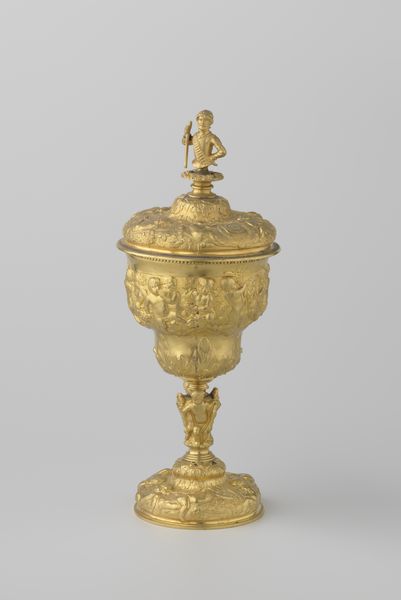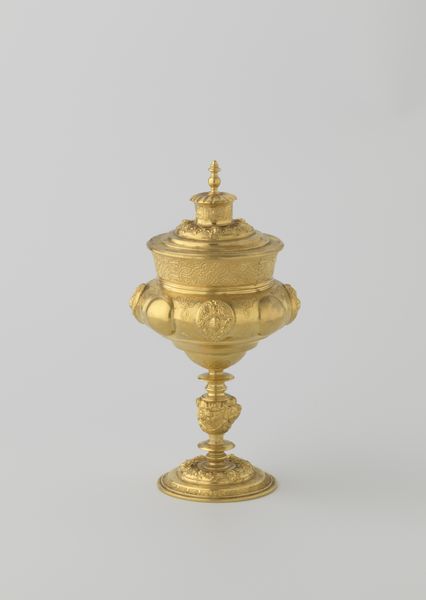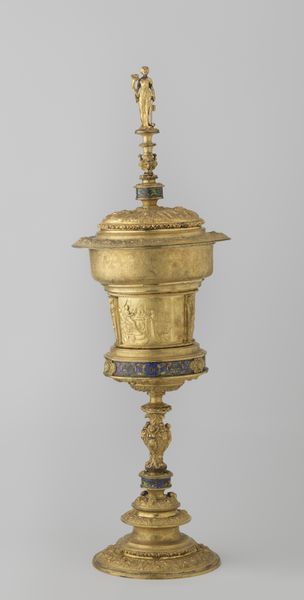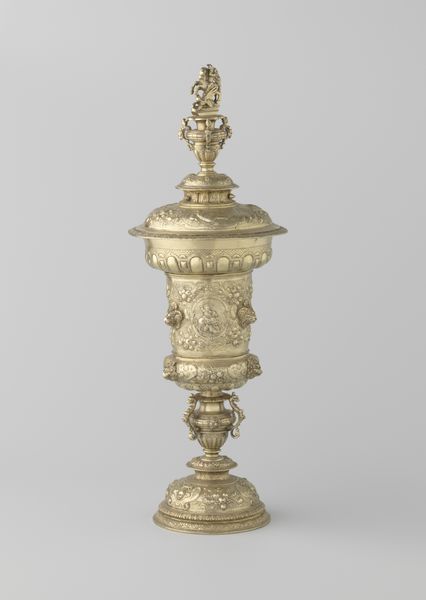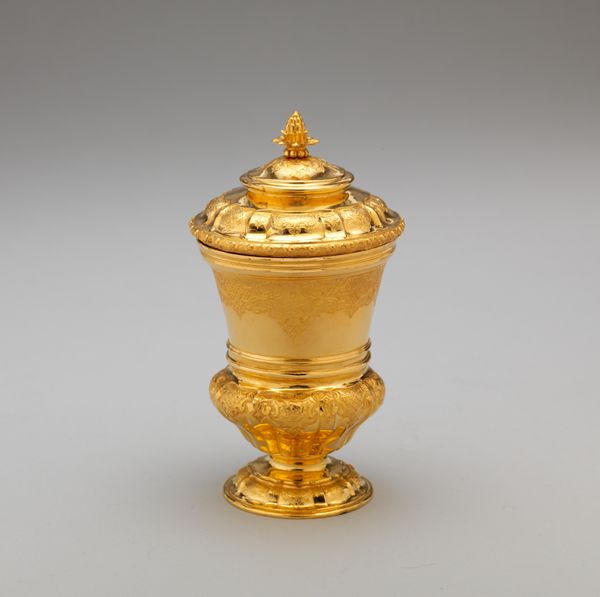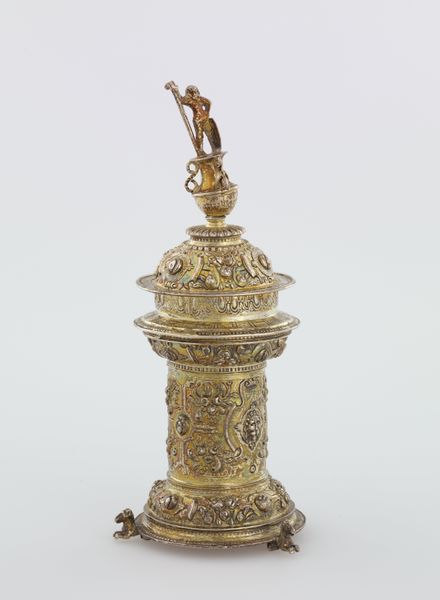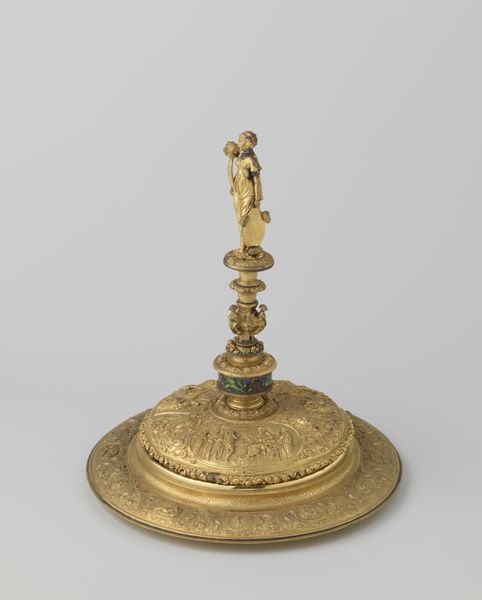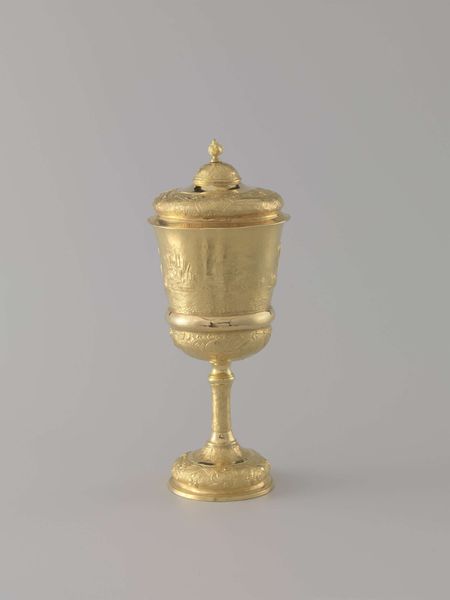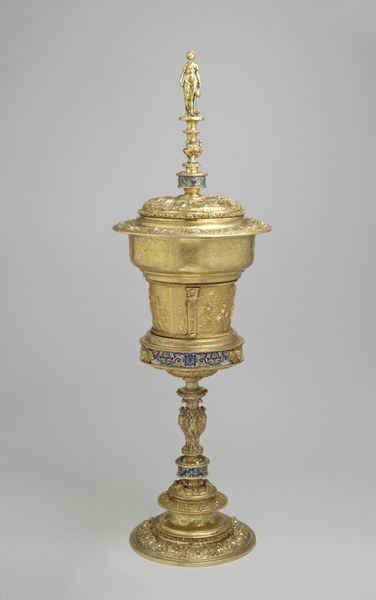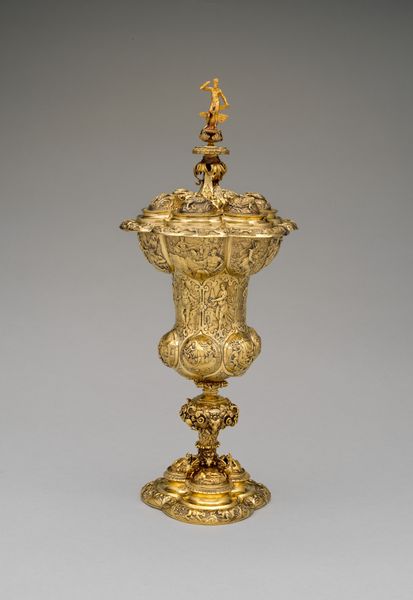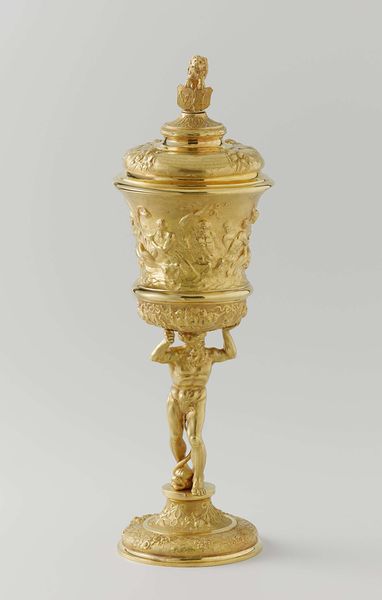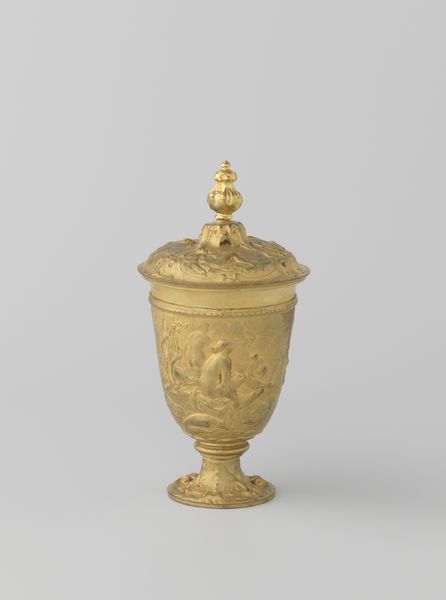
Galvanoplastische reproductie van een zoutvat met statuette van een krijgsman before 1880
0:00
0:00
elkingtonco
Rijksmuseum
Dimensions: height 47 cm, diameter 14.5 cm, weight 1355 gr
Copyright: Rijks Museum: Open Domain
This is a salt cellar, made by Elkington & Co. sometime between 1829 and 1963, using the relatively new technique of galvanoplasty. This object speaks to the social history of taste, class, and industry. Salt cellars, like this one, were table ornaments that signaled the wealth of the owner. By the 19th century, industrialization had led to a great increase in the number of people who could afford luxury items, and firms like Elkington & Co. were keen to cater to this new market. Galvanoplasty was one way to reproduce luxury objects at a reasonable price. Salt cellars like this one reference earlier, hand-made objects. By reproducing historical styles with new technologies, institutions like Elkington & Co. helped to shape contemporary ideas about national heritage and cultural memory. To learn more, we can research how galvanoplasty transformed the art market in the 19th century, and how museums helped to promote it.
Comments
No comments
Be the first to comment and join the conversation on the ultimate creative platform.
